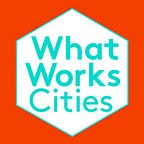Hartford’s Youth Service Corps: An Investment in the City’s Future
By Sharman Stein
Hartford, CT: In this state capital — where legislators are wrangling over a budget deficit of almost $5 billion, the City is fighting bankruptcy, and insurance giant Aetna recently announced it was leaving Hartford for New York City, partly because of a lack of potential employees — Kim Oliver is also thinking about numbers and dollars. Oliver, the charismatic Director of Hartford’s Department of Families, Children, Youth and Recreation, is focused on the human cost of what happens when disconnected young people do not find a place for themselves in school or at work. These youth, she says, are “truly lost. We’re leaving them behind.” These very same young men and women, she says, could be helped to make a contribution to the community, including, eventually, taking jobs like those Aetna is looking to fill.
Hartford is targeting these youth in its dynamic Youth Service Corps (YSC), launched in 2016, six months after Mayor Luke Bronin came into office and raised $2.2 million from private donors to fund the program. Some 200 young people are currently participating. Part workforce readiness and academic support, part social development, YSC is open to young men and women ages 16 to 24 — with an emphasis on those who are most in need (criminal justice-involved, gang-involved, recently released from incarceration, in foster care, homeless, experiencing a lack of basic needs, etc.).
Each young person accepted into the yearlong program is assigned with developing an Individual Success Plan, with goals related to education, behavioral development, career growth, and postsecondary education. They are paid for performing part-time work throughout the community, which can include cleaning up parks, helping seniors with removing snow and cleaning gutters, and working at after-school programs or early childhood centers. A longstanding local nonprofit, Our Piece of the Pie (OPP), manages the program in coordination with the City, providing wraparound support as the youth complete service-learning projects.
To ensure it can continuously improve the program and demonstrate success, Hartford is working with What Works Cities’ expert partner the Center for Government Excellence at Johns Hopkins University to develop key performance indicators that tie together goals, programming, and targeted outcomes, such as growth in each element of a young person’s Individual Success Plan.
At OPP’s headquarters in Hartford recently, three YSC members talked about their lives with a solemnity beyond their years. They described struggling in school, making poor choices in friends, getting in trouble with the law, and not being able to find work or figure out a path to firmer footing. Some have already served time in jail and vow never to return. A 16-year-old described being sent from school to school without being helped to make any progress toward achieving a diploma. “The teachers just didn’t care whether we did the work or not,” she said.
At OPP, each young person is assigned a staffer who becomes their ongoing source of support. “Every young person who’s here is connected to a caring adult,” said Hector M. Rivera, Jr., the Chief Operating Officer, a staunch believer that data are critical to telling the story of human service programs. “Funders want more than feel-good stories,” he said. “They want to see impact evaluations. And the data allow you to tell your story better, and make the best operating decisions more quickly.”
Oliver is a hometown booster who believes that the city’s potential is entwined with its young people. “We want to show that Hartford is better off if we can show wins for these youth. They are untapped assets who could contribute back to the community.”
Sharman Stein is the Director of Communications at What Works Cities. Last week, she and Senior Communications Manager Kristin Taylor visited several participating cities in the Northeast to show you more about how local governments are finding what works. Read more of their posts here.
